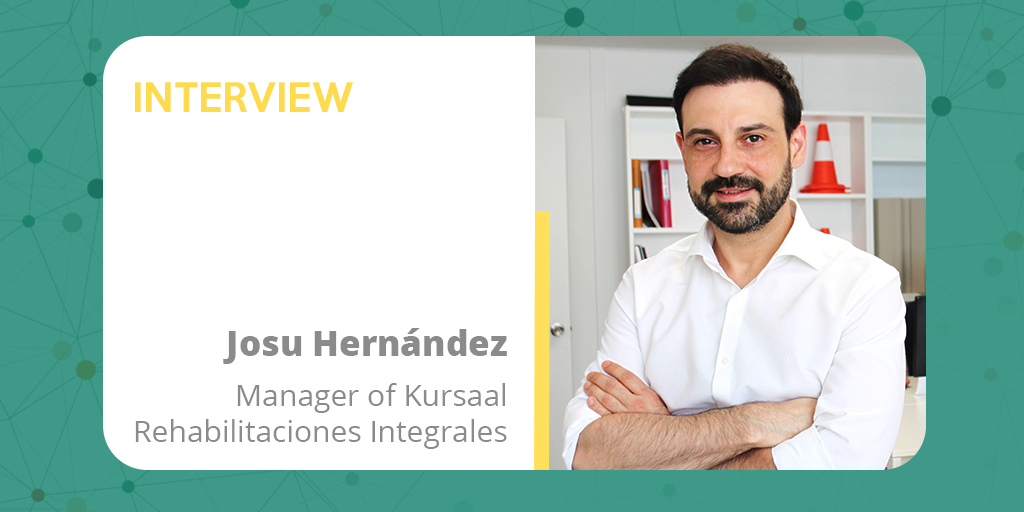
IN A FEW WORDS, WHO ARE YOU AND WHAT ARE YOUR PROFESSIONAL PURSUITS?
I am Josu Hernández, manager of Kursaal Rehabilitaciones Integrales S.L., a company pioneer in energy retrofit in the Basque Country (Spain). Kursaal seeks to rehabilitate the architectural heritage while respecting the values of energy efficiency, user comfort, and respect for the aesthetics of the most emblematic historic buildings.
In Kursaal Rehabilitaciones we are committed to taking the rehabilitation sector one step further in terms of productivity and quality. To this end, we are committed to the use of new digital technologies and the adoption of rigorous energy efficiency standards.
What is your take on BIM in renovation of residential buildings?
For us, BIM is the definitive change towards a modern/updated rehabilitation sector that allows us to leave behind obsolete practices and makes us more efficient. The implementation of BIM in this sector is a major challenge that we must face collectively. In Kursaal, we are already changing the internal work protocols and training our staff to implement this methodology in our rehabilitation projects.
Rehabilitation processes involve many actors with different levels of technology. The main difficulty I see when applying BIM is to get this methodology to all of them so that the project progresses correctly. I believe that to reach a level of BIM maturity in a project, we must train professionals and bet on the new generations that bring new technological skills. We must also emphasize the importance of collaborative work between agents, one of the keys of the BIM methodology.
In addition, most of the existing BIM tools are designed for large-scale projects, being even more complicated to apply them in rehabilitation projects of our day-to-day. We must adapt BIM protocols to the characteristics of this type of project, which are executed in a shorter period of time and, in many cases, present difficulties due to the complexity of this type of action.
What is your perception of BIM4REN?
This type of initiative promoted by the European Union is essential for SMEs (small and medium enterprises) and companies like ours to decide to take the leap towards the digital transformation of the sector. In addition, the fact of having a consortium of partners working together within the project helps to share and enrich ourselves from the experience of other companies of different nature.
We have extensive experience in building refurbishment and we have offered our portfolio of projects to test the tools being developed by the different partners. BIM4Ren is an ideal opportunity to put into practice in real projects these new technologies that will help us later in our day-to-day and the sector in general.
How does the future of construction look like according to you?
It would be naive to think that this change will happen overnight. However, it is really important to notice that the first steps have already been taken. The path to digital retrofit is the goal.
The context has changed. On the one hand, the amount of information, accessible to everyone thanks to the internet, is a huge advantage when it comes to incorporating new innovative processes. On the other hand, institutions are adopting a key role in this change. Its financial support to companies is one of the keys to its success. Moreover, the incorporation of new technologies as new training subjects in educational centres is going to mean a very important change in the sector in the medium term.
Undoubtedly, the medium-term future is a more industrialised sector where there is no improvisation on site and processes are planned in advance to avoid unforeseen events. The use of new technologies, communication and teamwork will already be a reality.
